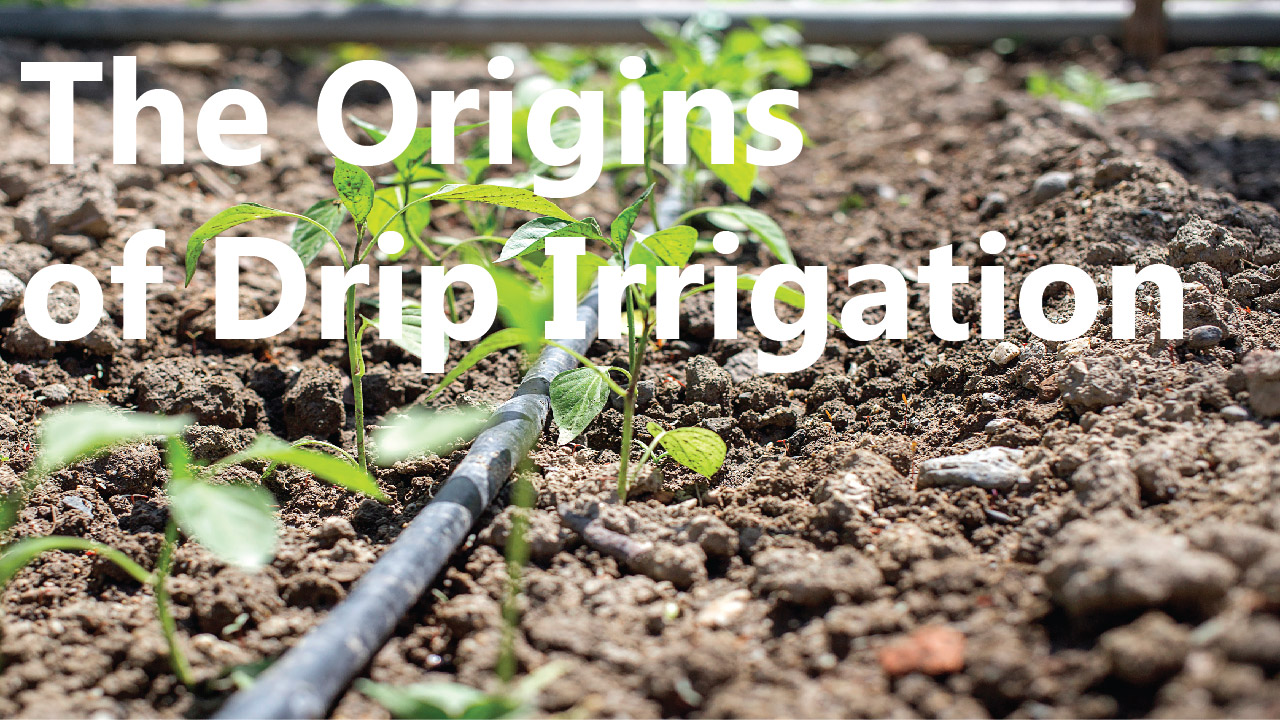The Origins of Drip Irrigation
Jan 24th 2023
We know the origins of drip irrigation go back to ancient times. But where and when did the idea of modern drip irrigation originate?
In China going back to 100 BCE, buried clay pots referred to as ollas were filled with water that seeped slowly to water important crops. By the 1800s, the same technique was used in Afghanistan and across the entire Middle East, where farmers raising tree crops developed some efficient ways of irrigating in the desert.
Unglazed clay pots were partially buried in the soil next to a tree or plant and filled with water on a schedule to control the flow of water. The tree roots would find the moisture as it seeped through the unglazed clay vessel. That helped trees thrive in the dry climate.
Drip Irrigation Developments in the 20th Century
Research by E. B. House at Colorado State University in 1913 showed the same thing: Slow irrigation could target the root zone of plants. In the 1920s in Germany, researchers used perforated pipe to demonstrate how to control water flow. In effect, the technique slowed the flow of water down to irrigate crops more efficiently.
In the 1930s, Polish-born Simcha Blass, an engineer, co-founded Mekorot, Israel's national water company, which provided water for irrigation in Israel's southern Negev desert. Considered the father of modern drip irrigation, Blass went on to sell systems in and outside of Israel.
In 1948, Blass bought the pipes England had used to carry water to extinguish fires during the London Blitz of World War II. He shipped them home to Israel, where they were used to construct a water system to supply 11 Israeli settlements and the Arab Bedouins in the Negev. After years of experimentation, he came up with a device using water pressure and friction to control the water emitted from holes drilled at regular intervals in a plastic tube. This new method ushered in the age of modern drip irrigation.
With the advent of modern plastics in the late 1950s, Blass reopened his private engineering office with his son Yeshayahu and pursued the idea of commercial drip irrigation. His main goal was the creation of a product that ran water from a pipe through an emitter with a larger and longer passageway that used friction to slow the flow to a steady drip. In the 1960s, Blass developed and patented the first practical plastic drip emitter.
Working at Kibbutz Hatzerim during this period, Blass and his son developed drip irrigation systems in Israel and abroad. He soon found investors within the kibbutz to purchase his technology and erect a facility for large-scale manufacturing of drip tubing and emitters. Taking Blass's original spaghetti tubing, along with a new type of inline emitter developed with the aid of engineers, Blass and his backers formed Netafim, the world's first drip irrigation company.
In North America, the first drip tape was named "Dew Hose." Designed and manufactured Chapin Watermatics, it was released to the public in the mid-1960s. This system was later bought by Jain Irrigation Systems in 2006. Drip tape was designed for farms to be run up to 500 feet with an even water flow.
In 1992, some 27 years later, DripWorks was founded on the principle that water is one of the world's most precious resources. From the beginning, Netafim has been one of the retailer's most dependable suppliers. Netafim provides the highest-quality drip irrigation products available. Farmers and gardeners who want to use the best components in their drip irrigation systems often choose this brand.
Modern Drip Irrigation and its Future
As you can see, the history of drip irrigation invention and improvement is a long and complex story. It dates back more than two millennia and has benefited from improvements in technology, materials, and manufacturing techniques.
No doubt even more exciting changes and innovations lay before us in the future. Still, at its heart, drip irrigation is a simple concept that pays big dividends. It conserves water while benefiting the plants, shrubs, and trees it irrigates.
"No one person invented drip irrigation," noted Dr. Daniel Hillel, recipient of the 2012 World Food prize for his role in conceiving and implementing improved methods of food production with "micro-irrigation.
Still for all his contributions, Simcha Blass is more than deserving of the title "Father of Modern Drip Irrigation." Every gardener and farmer who benefits from the advantages of drip irrigation owes a big debt of gratitude to Hillel.
DripWorks would like to thank Netafim for supplying historical information about Simcha Blass and the origins of modern drip irrigation. At DripWorks.com, you can find some of Netafim's quality products and much more.

